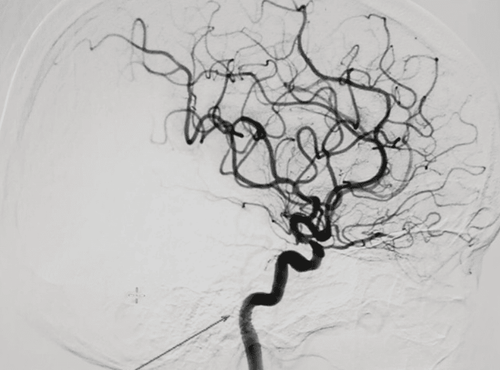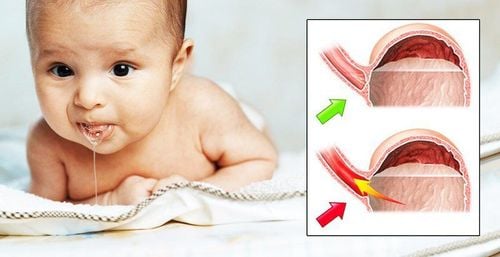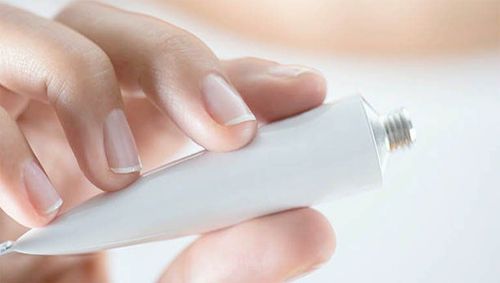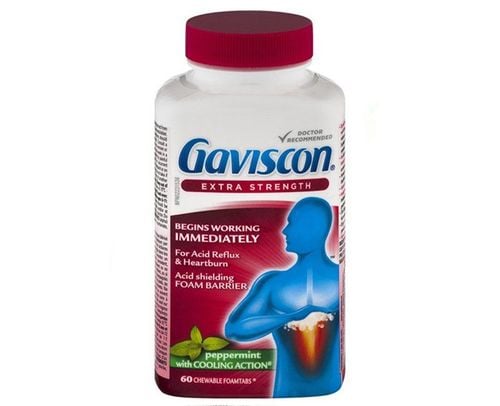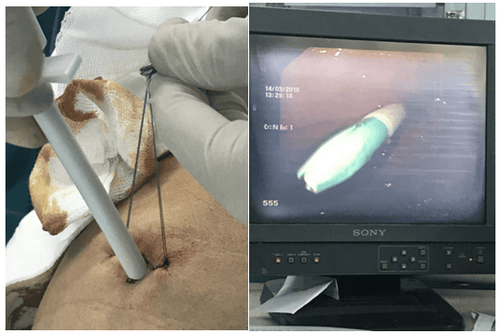This is an automatically translated article.
The article is professionally consulted by MSc, BS. Dang Manh Cuong - Doctor of Radiology - Department of Diagnostic Imaging - Vinmec Central Park International General Hospital.Percutaneous gastrostomy under the guidance of digitized angiography with background erasure is a technique widely applied in clinical practice, especially for patients who cannot eat or drink by mouth or require general anesthesia.
1. Outline of lower percutaneous gastrostomy
Gastric bypass is a fairly common indication in clinical practice, applied to patients who cannot consume food through the mouth - esophagus for various reasons, but the digestive system is still able to normal absorption.The method of opening the lower percutaneous gastric tube with the support of flexible bronchoscope has appeared since the 1980s and has been widely applied. However, the nature of endoscopic gastrostomy in general is still a deeply invasive technique, especially in situations where the patient is exhausted, unable to cooperate during the endoscopic procedure or must have general anesthesia.
Recently, in the world, there have been many centers capable of performing interventional radiology gastrectomy with high frequency and confirmed that this is a minimally invasive method of gastrostomy. , safe, effective and does not require general anesthesia.
2. In what cases should percutaneous gastrostomy be indicated?
Percutaneous gastrostomy under the guidance of digital angiography is indicated especially in some cases:Swallowing disorders due to neurological diseases, such as cerebrovascular accident, cerebral degeneration (Alzheimer-type dementia), neurotoxicity; The patient has a large tumor in the face and neck, esophagus and mediastinum, leading to obstruction of the swallowing tract; Exhausted state: hydrocephalus, brain death, congenital heart disease, advanced to late stage; Diseases causing secondary malabsorption, including chronic enteritis, esophagitis, small intestine after irradiation; Psychotic disorder (inability to perceive eating behavior).

Bệnh nhân tai biến mạch não được chỉ định thực hiện
3. What do patients need to prepare before the procedure?
Patients and families should be thoroughly explained about the lower percutaneous gastrostomy procedure to coordinate with the physician when necessary; Need to fast, drink at least 6 hours before the procedure. Can drink no more than 50ml of water; In the intervention room: The patient lies on his back, installing a monitor to monitor breathing, pulse, blood pressure, electrocardiogram and SpO2 oxygen saturation; In case the patient can't control his behavior, is too excited, can't lie still, he needs to give sedation.4. Steps to perform percutaneous gastrostomy under digital angiography erasing background
4.1. Stomach dilatation
Installing a monitor system to monitor the patient's basic parameters, including electrocardiogram, blood pressure, SpO2, breathing rate; Disinfect the skin of the abdominal wall, then cover with a sterile towel with holes; Use a 50ml syringe to inflate the nasogastric tube continuously through the nasogastric tube to distend the stomach; Decrease gastric motility with glucagon or buscopan.4.2. Hang the stomach to the anterior abdominal wall
Local anesthetic in layers with lidocaine in moderate amounts over an area of about 2 cm2 around the gastric bypass site; Use an 18G needle to pierce the abdominal wall into the stomach. When the needle tip is stable in the stomach, proceed to insert the barrel containing the T-fastener into the 18G needle, push the T-fastener into the stomach with a syringe containing physiological saline; Continue gastric suspension with subsequent T-fasteners.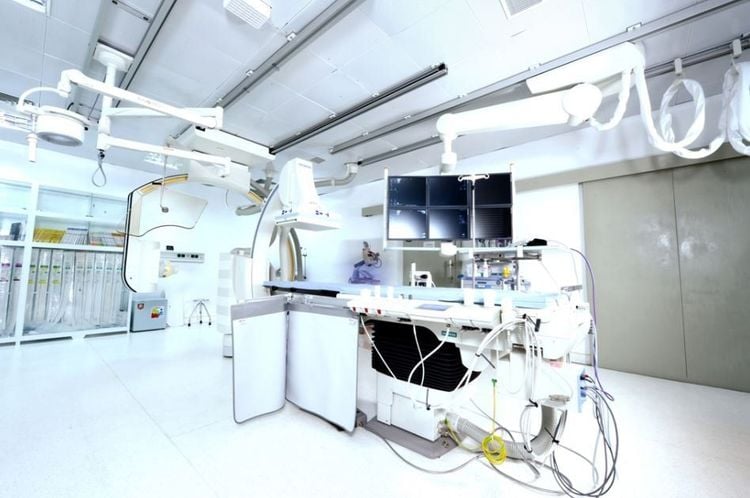
Tiến hành mở thông dạ dày qua da dưới chụp mạch số hóa xóa nền khá an toàn, ít tai biến
4.3. Open gastric bypass
The doctor uses a knife to make an incision in the skin in the center of the T-fastener that has hung the stomach; Use an 18G needle to poke through the incision site into the stomach lumen; Insert a piece of rigid wire 0.035 into the gastric lumen through an 18G needle; Withdraw the 18G needle, and then pass the dilatation tubes through the rigid wire one by one.4.4. Insert a nasogastric tube
Insert the catheter into the gastric lumen through a rigid wire; Fix the tip of the catheter in the lumen of the stomach with a balloon inflater; Withdraw the rigid wire and fix the catheter to the skin surface of the anterior abdominal wall with the buckle and threads of the T-fastener; Check the position and circulation of the catheter with contrast; Complete the trick. In the process of conducting percutaneous gastric bypass under digitized angiography, there were rare cases of complications. Depending on the severity and nature, the doctor will decide to treat on the spot or consult a specialist before giving the final treatment plan.DSA background removal digital capture technique has been widely used. Currently, at Vinmec International General Hospital, there is a team of experienced specialists who, together with modern standard equipment, use digital angiography to erase the DSA background in diagnosis and treatment. Treatment will bring optimal treatment results for customers.
For examination and treatment at Vinmec International General Hospital, please come directly to Vinmec Health System or register online HERE.





